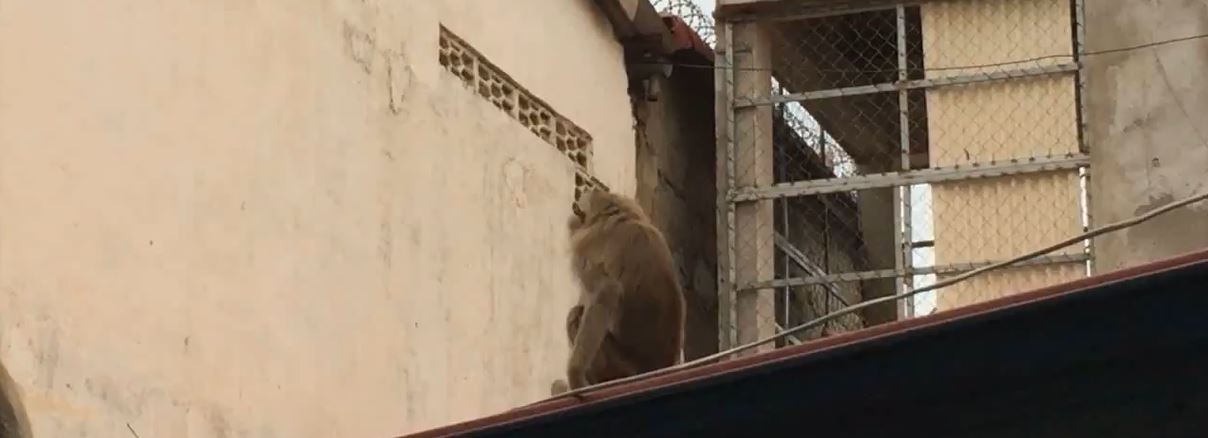Remove Wild Animal On Your Roof

Having wildlife on your roof can be a serious problem. No matter how sweet and innocent they appear, wild animals will cause some sort of damage to the roof, whether this is simply leaving behind waste products and creating a nest, or actually starting to tear into the shingles. This means that you should try to get wild animals off of your roof as soon as you can to limit the damage done. With a few basic considerations, you may be able to do the job yourself, but don't hesitate to call a professional.
Determine The Animal
The very first thing you need to do when trying to get a wild animal off your roof is to figure out what type of animal it is. This is crucial as every animal will require a slightly different technique, such as the type of bait placed in cages. It also allows you to double check that there are no laws preventing you from trapping and relocating an animal or doing anything else to move it.
In addition to figuring out what type of wild animal has taken up residence on your roof, try to figure out whether there are babies present. If there are, you will need to take additional precautions to prevent separating the mother from her babies, which would cause all of the animals involved a great deal of stress and risk.
The best way to tell which animal you have on your roof is to actually see it, but if it tends to hide, you can ask a wildlife professional for help identifying it. You can also get many clues from the type of noise and when it occurs. Squirrels, for example, will have rapid tiny scampers in the morning or during the early evening. Raccoons tend to be active at night and make growling or chattering sounds as well as heavy thumps. Rodents are also active at night, making light, rapid foot movements. Opossums are also nocturnal, but with slow-moving, heavy sounds. Snakes produce slithering sounds and are active at any time.
Remove Food
As with any wildlife removal, one of the first steps to getting an animal on your roof to leave is to remove its food source. This means you should check your roof for fallen leaves, fruits, nuts, and other items. Also look at your yard as the animals may be living on the roof, but eating from your yard. When you clean up fallen items, seal your garbage cans, and remove pet food, the animal won't see an easy food source and is more likely to leave, or at least not come back.
Get Rid Of Shelter
In many cases, the animals will be living on your roof to find shelter. They have most likely found a nice pile of debris or old branches or maybe an eave that they can fit underneath. You will want to remove all the debris from your roof while checking for food sources. Cover the area under eaves with mesh so animals can't use that as shelter either.
Trim Back Trees
Depending on the animal on your roof, it may help to trim back trees and branches approaching it. This would theoretically cut off some of the access to the roof, or at least make it harder for the animals to get to. Keep in mind, however, that it won't stop all animals; squirrels can jump fairly long distances and raccoons are excellent climbers.
Use Traps
The best way to firmly remove a wild animal on your roof is by trapping it and then relocating the animal to another location, or simply placing it off your roof after you have taken the above steps. First, you need to make sure that it is legal to trap the animal on your roof and/or relocate it in your area; in some cases you may need a permit to do so.
Now you will want to set up the trap. Because roofs are high up and sloping, you must firmly bolt the trap down, preferably with heavy duty washers and screws. You will also want to put a backing underneath the trap to protect your shingles. Anytime you set up traps on the roof, you need to check them very regularly as animals caught in them will be exposed to the elements, such as strong heat.
Check Your Home
In a large number of the cases where a wild animal is on the roof, they will have managed to enter some aspect of your home from the roof, or at least started creating an opening. This means that you will need to thoroughly check your fireplace, chimney, and especially attic for signs of animal entry, waste, or related debris. If you find damage or waste, clean it up carefully and make necessary repairs. Remember to never touch a wild animal with your bare hands as this increase your risk of disease, scratches, or bites.
Read the Pest Wildlife Home Page page for helpful information and to learn more about Remove Wild Animal On Your Roof

